Threads in UAE
(11 products available)Threads are a basic raw material used to create seams that connect the body parts and give clothing the desired shape. They are essential items for fashion firms, industrial garment producers, and tailors. It possesses both artistic and practical qualities. They serve a useful purpose when we use them to make seams, and they fulfill their aesthetic duty when we use them for decorations like applique or embroidery. Since thread bears the bulk of the strain and stress caused by movement, it must be durable and long-lasting. To guarantee longevity, flawless finishes, and outcomes of expert quality, the appropriate thread selection is essential for textiles, yarn & fabrics.
If you are looking for threads in UAE, TradersFind connects you with leading sewing threads companies that provide a wide range of threads for your business across UAE.You can find the threads at best price in UAE.Our comprehensive listings and detailed product specifications make it seamless to find the best threads manufacturers in UAE to fulfill your requirements.
Threads are a basic raw material used to create seams that connect the body parts and give clothing the desired shape. They are essential items for fashion firms, industrial garment producers, and tailors. It possesses both artistic and practical qualities. They serve a useful purpose when we use them to make seams, and they fulfill their aesthetic duty when we use them for decorations like applique or embroidery. Since thread bears the bulk of the strain and stress caused by movement, it must be durable and long-lasting. To guarantee longevity, flawless finishes, and outcomes of expert quality, the appropriate thread selection is essential for textiles, yarn & fabrics.
If you are looking for threads in UAE, TradersFind connects you with leading sewing threads companies that provide a wide range of threads for your business across UAE.You can find the threads at best price in UAE.Our comprehensive listings and detailed product specifications make it seamless to find the best threads manufacturers in UAE to fulfill your requirements.
Threads are a basic raw material used to create seams that connect the body parts and give clothing the desired shape. They are essential items for fashion firms, industrial garment producers, and tailors. It possesses both artistic and practical qualities. They serve a useful purpose when we use them to make seams, and they fulfill their aesthetic duty when we use them for decorations like applique or embroidery. Since thread bears the bulk of the strain and stress caused by movement, it must be durable and long-lasting. To guarantee longevity, flawless finishes, and outcomes of expert quality, the appropriate thread selection is essential for textiles, yarn & fabrics.
If you are looking for threads in UAE, TradersFind connects you with leading sewing threads companies that provide a wide range of threads for your business across UAE.You can find the threads at best price in UAE.Our comprehensive listings and detailed product specifications make it seamless to find the best threads manufacturers in UAE to fulfill your requirements.
View less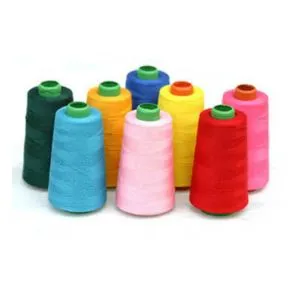
- Material Type : Cotton/Polyester
- Usage/Application : Sewing
View more...
Stylo Traders L.L.C
Other Categories
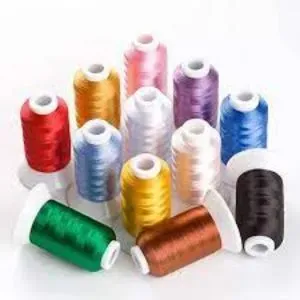
- Material : Rayon/Polyester
- Color Options : Multiple Colors Available
View more...
Stylo Traders L.L.C
Other Categories
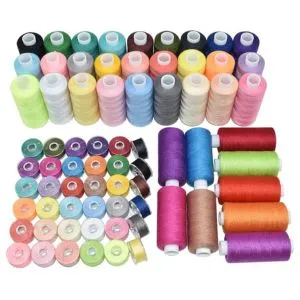
- Material Type : High-quality Polyester
- Thread Count : 500 meters/roll
View more...
Stylo Traders L.L.C
Other Categories

- Thread Material : Polyester
- Color Options : Assorted
View more...
Other Categories
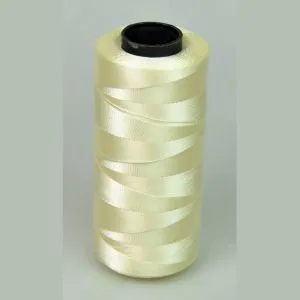
- Usage : For Sewing
- Material : Nylon
View more...
Other Categories
Felt | Buttons | Sewing Accessories | Motifs | Crochet Yarn
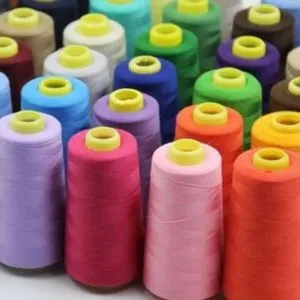
- Material Composition : Polyester
- Thread Thickness : Fine
View more...
Al Ansar Sewing Materials Trading Co
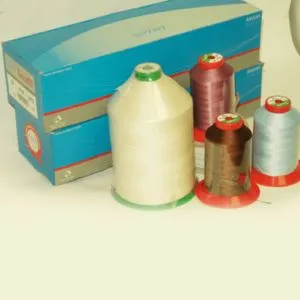
- Material : Polyester
- Technique : Covering
View more...
Dots Printing Material Trading LLC
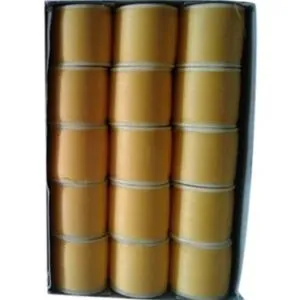
- Thread Material : Polyester
- Thread Weight : Lightweight
View more...
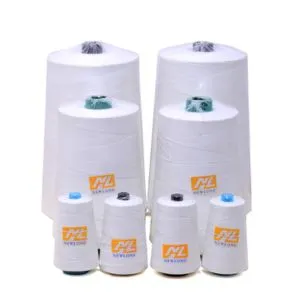
- Usage : For Portable Bag Closer
- Type : 100% Polyester
View more...
Gulf Packaging Machines Trd. LLC
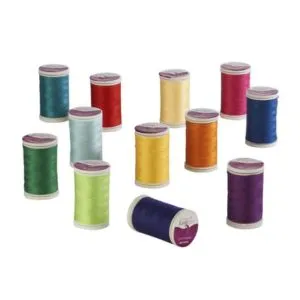
- Usage/Application : Textile Industry
- Material : Polyester
View more...
Dryad General Trading LLC
Other Categories
An easy way to post your sourcing requests and get quotes.
- One request, multiple quotes
- Verified suppliers matching
- Quotes comparison and sample request
Threads in UAE
Threads in UAE are necessary for many businesses, such as textiles and apparel. They are employed in the construction of furniture, clothing, and elaborate patterns. The thriving textile sector in the UAE provides all purpose threads in colors and types to meet both traditional and modern needs. A large selection of premium threads is available in local markets and shops, enabling both specialized textile projects and daily sewing.
Importance Of Choosing The Right Thread For Different Types Of Fabric
1.Strength and Durability:
- •Strong Threads Required: To handle the weight and strain of the fabric, use heavy duty threads like polyester or thick cotton. Seam failure can result from a weak thread breaking readily.
- •Extended Durability: Durable threads guarantee that joints remain intact under stress, extending the lifespan of clothing and other objects.Special embroidery thread enhances extended durability, providing stronger, longer-lasting stitches that withstand wear and maintain vibrant colors over time.
2. Appearance:
- •Consistency in Seam Lines: For even, smooth seams, the thread weight and fabric weight should be the same. While thin threads on heavy materials might not also hold up, thick threads on lightweight textiles can result in bulky seams.Rayon threads offer smoothness and uniformity, ensuring consistency in seam lines for a polished, professional finish in garments and textiles.
- •Expert Finish: Choosing the right thread produces smooth, even seams that improve the garment's overall look.Using commercial threads ensures an expert finish, providing durability and a refined look in professional sewing projects.
3. Fabric Stretch:
- •The elasticity of Thread: To preserve the fabric's flexibility and guarantee that the seams stretch with the garment, stretch fabrics need elasticity-rich threads, such as stretch polyester or wooly nylon.Metallic threads, though less elastic than other threads, adds a shimmering effect to seams, making it ideal for decorative stitching where stretch is not a primary concern.
- •Preventing Seam Breakage: When stretch textiles are used, non-stretch threads may cause the seams to break, jeopardizing the operation of the garment.
4. Color Matching:
- •Blending or Contrasting: To create a seamless appearance, the topstitching thread color can blend in with the cloth or contrast it for aesthetic effect. When choosing between blending or contrasting in your sewing projects, the ideal thread plays a key role, either seamlessly merging with the fabric or standing out to create a striking visual effect.
- •Invisible Seams: Accurate thread matching to the color of the cloth is essential for an invisible seam, especially when hemming or visible seams are involved.Invisible thread is perfect for creating invisible seams, allowing the stitches to disappear into the fabric for a flawless, nearly imperceptible finish.
5. Machine Compatibility:
- •Harmony between Thread and Machine: Certain threads perform better on particular computers. Smooth operation is ensured by using the appropriate thread type, which guards against problems like skipped stitches, broken threads, and machine damage.
- •Needle and Thread Pairing: To prevent issues when sewing, the thread, and the machine's needle size and type should be compatible.Proper needle and thread pairing is crucial in industrial sewing; using industrial threads with the appropriate needle ensures smooth stitching, reduces breakage, and enhances overall efficiency.
Types and Uses of Sewing Threads
Sewing threads come in a variety of varieties, however, the three primary varieties are as follows:
1. Substrate
The substrate of the sewing thread has the power to make or break your product. It can also negatively impact the final product's quality and design because it cannot be as resistant to different environmental factors. Sewing threads manufacturers need to select the best kind of substrate to satisfy their needs and enable them to provide high-quality elastic sewing threads to their clients.Elastic thread is a stretchable, flexible thread used in sewing and crafting to add stretch and durability to garments and textiles. Listed below are the different types of substrates to be used:
Natural Thread:
In the industrial region, they are utilized sparingly. Material options for it include linen, cotton, silk, and wool.
1. Cotton Sewing Thread:
The most popular natural sewing thread is cotton, which is perfect for simple stitching. It sews more easily and doesn't kink or drop stitches as much. Long-running sewing machines produce heat in the needle, which cotton sewing thread can readily absorb. It molds beautifully into the seams and is easily colored. The strength and resistance to abrasion are not as high as with synthetic threads. Three categories can be used to classify cotton sewing thread:
Uses:
1. Tea bag string
2. Low-grade clothing is made with soft finished threads.
3. Sewing thick materials like canvas and leather requires the use of glazed threads.
4. Both the garment dye program and lingerie goods use mercerized cotton threads.
2. Silk Thread:
When compared to cotton thread, silk thread is more expensive. Three basic varieties of silk thread exist. They have three weights: light, medium, and heavy. Silk thread is utilized not only for needlework but also for stitching items made of silk and wool. They are a special kind of embroidery threads. Because it is incredibly flexible and doesn't leave any holes in the items' seams, it makes a great sewing thread. It may have three or double-ply construction.
Uses:
1. Utilized for needlework projects.
2. For decoration and hand stitching uses.
3. Coarser silk threads are used in buttonhole tailoring, appliqué, binding, and quilting.
4. For fragile textiles, lightweight silk threads are utilized.
3. Woollen Thread:
Woollen threads are used for blanket stitching and embroidery crafts because they are more durable than cotton and linen threads. There are three kinds of wool embroidery thread. They're crewel, tapestry, and Persian. Crewel is lightweight, tapestry threads are medium-weight, and Persian woolen threads are heavyweight.
Uses:
1. Utilized for needlework projects.
2. Used to create blanket stitches.
3. Stitching thick materials such as wool and canvas.
4. Linen Thread:
The oldest sewing thread for textiles is linen. For lock stitch seams, it works well. It swells when wet and is very simple to color. The natural appearance of an article of clothing is enhanced by a seam made of linen thread.
Uses:
1. Mattress and bedding.
2. Binding of books.
3. Canvas.
4. Rugs.
5. Lace.
6. Sports and outdoor products.
7. Automobile sectors.
Synthetic Sewing threads:
The most popular synthetic sewing thread is composed of nylon and polyester. Compared to natural fiber threads, synthetic fiber threads are stronger, less prone to shrinking, and have better color fastness. Manufacturers resorted to synthetic fiber threads because natural fiber threads were limited.
1. Polyester threads:
Polyester sewing threads have superior sewing abilities and are stronger. To enable these to move through leather or cloth with minimal resistance, lubrication is used. Polyester threads can be used to stitch leather, knit, or woven goods depending on the finishes and methods of manufacturing. Comparing these to simple cotton strands, they appear more shiny.
Uses:
1. Shirts
2. Blouses
3. Jeans
4. Suits
5. Uniforms
6. Swimwear
2. Nylon Threads:
Sewing synthetic thread that is finer, stronger, and more resilient. It can be used to sew garments that weigh light to medium. Occasionally, it receives specialized lubrication to improve performance and durability at high temperatures without breaking or discoloration.Wooly nylon thread, a type of nylon threads, is known for its stretch and softness, making it perfect for serging and creating seams that require flexibility and comfort.
Uses:
1. Shoes made of leather
2. Leather products
3. Travel accessories and bags
4. Outdoor products
5. Sporting goods
2. Construction
Construction sewing thread is a strong, durable thread used for sewing seams in heavy-duty fabrics, ensuring that garments and items like jeans, bags, or upholstery hold together securely.
Below are the different types of wholesale sewing threads according to construction:
1. Spun Thread:
Spun polyester thread can be manufactured from synthetic or natural fibers. Polyester is the most widely used spun thread. Short fibers are used to make staple or spun thread. Natural staple fibers include flax, cotton, wool, and others. Spun or staple thread can be made by cutting synthetic fibers, like acrylic or polyester, into short lengths and twisting them together. Spun or staple threads can be used to create strong, long-lasting seams.
Uses:
1. Blouses
2. Kids dress in denim or jeans.
3. Shirts
4. Knitwear
5. Undergarments
6. Jackets
2. Core Spun Thread:
The thread is an industrial sewing thread. The term core spun threads refers to a technique where a continuous filament is twisted around a central filament. It is 40% to 50% stronger than a typical weighted spun thread. When sewing hems or seams on thick fabrics like denim, core-spun thread helps minimize the amount of stitches that break.
Uses:
1. Jeans
2. Blouses
3. Undergarments
4. Shirts
5. Leather Goods
6. Uniforms
3. Filament Thread:
One filament, many filaments twisted together, or a little twist of bulk filaments can all be used to create it. Filament threads mostly come in three varieties, which are as follows:
•Monofilament Thread:
It has a single, continuous fiber composition. It is less flexible and more rigid, which limits its use even if it is stronger and less expensive. One natural continuous monofilament thread example is silk.
Uses:
1. Invisible joints
2. Hair securing
3. Quilting
4. Flags
5. Upholstery
6. Garments
7. Clothes
•Multifilament Thread:
It is composed of many connected, continuous threads. Usually, threads of this kind are made from nylon or polyester fibers. When greater strength is needed, it is employed.
Uses:
1. Leather products
2. Footwear Accessory
3. Clothing
4. Interior of the vehicle
5. Travel accessories and bags
3. Finishes:
Sewing threads are finished in the finishing departments of the factories that manufacturers sewing threads to enhance the ability to stitch and meet any particular functional demand. Different types of wholesale sewing threads based on finishes are listed below:
1. Fire Resistant Threads
The purpose of fire resistant threads is to provide flame resistance to the sewing thread.
Uses:
1. Protection gear and flame resistance
2. Work gloves
3. Military gear for protection
4. Work attire
2. Anti-Static Finish
To prevent the thread from accumulating static charge, a unique finish is applied.
Uses:
1. Workwear and suits for employees on electric production lines
2. Textiles that conduct
3. Water repellent finish
When making water-repellent seams, hydrophobic finishing is applied to the thread to make it water-resistant.
Uses:
1. Raincoats
2. Outwears
Advantages of Threads
1. Versatility:
Threads come in a variety of thicknesses and materials (cotton, polyester, silk), which means that they can be used for a broad range of sewing and textile tasks, from delicate fabrics to rugged objects. They provide both artistic and practical uses for a variety of crafts, including general stitching, quilting, and embroidery.
2. Durability:
Superior threads are made to resist damage, guaranteeing that seams hold up over time and during numerous washings. Durable threads are resistant to tearing or unraveling, which is essential for preserving the longevity of fabrics and clothing.
3. Flexibility:
Comfort and flexibility are provided by the ability of threads to stretch and move with the fabric in garments and other stitched products. This flexibility is especially crucial for clothing that needs to fit snugly without limiting movement, such as sportswear.
4. Variety:
A wide variety of colors, finishes, and types (such as metallic, glossy, and matte) are available for threads, making it possible to customize and match them with different materials and design styles. Specialty threads, such as those that are heat-activated or water-soluble, provide extra functionality for particular stitching requirements.
5. Aesthetic Appeal:
The aesthetic appeal of clothing and textiles can be improved by adding ornamental elements like stitching patterns, embroidery, and ornaments made from threads. Innovative thread selections and techniques can give a project's end product texture, contrast, and distinctive design aspects.
Maintenance and Storage of Threads
Sewing threads are an essential part of any sewing project, and their quality and longevity can greatly impact the outcome. Whether you’re a professional seamstress or an occasional hobbyist, knowing how to properly store and maintain your colored sewing threads is crucial for preserving their quality and preventing unnecessary frustration during your sewing sessions. In this article, we will guide you through the basics of thread care, offering tips on proper storage and maintenance techniques that will help extend the lifespan of your valuable sewing threads.
Proper Storage
1. Keep threads out of direct sunlight: Sunlight exposure can weaken the fibers in threads and cause colors to fade. To avoid any damage, it is preferable to store your threads in a cold, dark place.
2. Avoid extreme temperatures: Just like sunlight, extreme heat or cold can cause your threads to lose quality. The strength of the thread may be weakened, therefore keep them away from radiators, vents, and other areas that may experience significant temperature swings.
3. Tidy up your threads: To avoid knots and tangles, keep your threads well arranged. To ensure quick access and avoid needless entanglements, store your threads in a thread rack, thread box, or special drawer system.
4. Protect against dust and filth: The performance of threads can be impacted by the accumulation of dust, dirt, and other debris. To keep them clean and clear of pollutants, store them in lidded containers or utilize thread spool boxes or individual thread organizers.
Proper Maintenance
1. Avoid excessive handling: Handling too much can cause oil from your palms to pass onto the threads, which can draw dust and lower the thread quality. Try to avoid touching the threads as much as you can.
2. Regularly clean your sewing machine and thread route: It is important to clean your sewing machine if you see lint or debris accumulating in the bobbin region or thread path. When sewing, accumulated lint can transfer to the thread and harm its strength and look.
3. Proper tension adjustment: Unnecessary stress on the thread from incorrect sewing machine tension settings might result in breakage or uneven stitches. Verify and adjust the tension by the cloth and thread you are using before beginning a new project.
4. Properly store thread ends: Do not leave loose ends hanging around after using a thread. This may cause the threads to untangle, tangle, and mingle with one another. Trim the ends of the thread neatly and fasten them with a knot or with bobbins or thread spool huggers.
Factors To Consider When Choosing Threads
1. Thread Material:
Similar to fabric, different types of fibers are used to make sewing thread, and each has unique properties. Matching the fiber of your thread to the cloth you are working with is often a good idea. For example, use cotton thread for cotton, polyester thread for polyester, etc.
2. Thread Size:
The thickness of a thread is indicated by its size. There are two methods for doing this, and you'll discover that different brands might employ either one.
3. Thread Weight:
This is the most common measurement that you will encounter. The weight of a thread is expressed in grams per kilometer of length. A thread is categorized as "40 wt.", for instance, if 40 kilometers of that thread weigh one kilogram.
As a result, a thicker thread is indicated by a lower weight number because it requires less thick thread to weigh one kilogram.
4. Thread Color:
It makes sense to match the thread as closely as possible to the cloth you are using when selecting it for a project. Still, there are a few more pointers to help you achieve the greatest outcomes.
Find the Threads at best price in UAE on TradersFind
TradersFind is a reliable platform for those who are looking for threads in UAE. You can find different verified threads suppliers in UAE from the category page you can get the complete details such as contact details, location, or WhatsApp number. Through that, you can get in touch with sewing threads companies and buy threads. In short, TradersFind is the right platform for you to connect with the top sewing thread suppliers in UAE without any difficulty.
Frequently Asked Questions (FAQs)
Q1: What are the quality standards for threads?
A1: During washing and wearing, a stitched seam is kept firmly in place by high-tensile threads strength. During high-speed stitching, a smooth surface and lack of flaws guarantee reduced friction between the needle and the material. For the thread to be more sewable and abrasion-resistant, it needs to be highly greased.
Q2: What material is a thread made of?
A2: Natural fibers like cotton, wool, silk, and linen or synthetic fibers like rayon, polyester, and nylon are used to make threads. A few typical fibers are used in sewing, quilting, serging, and embroidery, while there are dozens more fiber kinds that can be twisted and spun into thread.
Q3: How to prevent the thread from tangling or knotting?
A3: Keep the thread spool in a thread holder or feed it through the machine in the right direction to avoid tangling. Use the correct threading techniques and make sure the thread is not old or broken.
Q4: How to keep the thread in good condition?
A4: Keep threads out of direct sunlight and in a cool, dry location. Store them in airtight spools or containers to avoid dust buildup and damage.
Copyright © 2024 Interconnect Marketing Management L.L.C All rights reserved.















